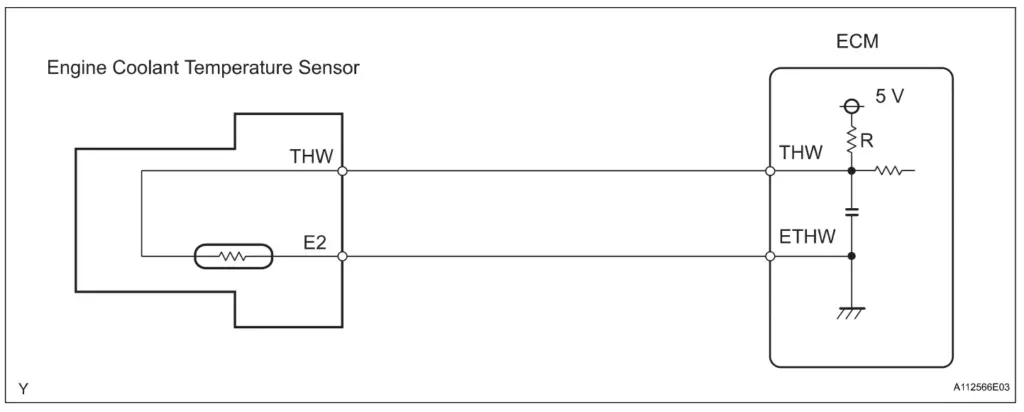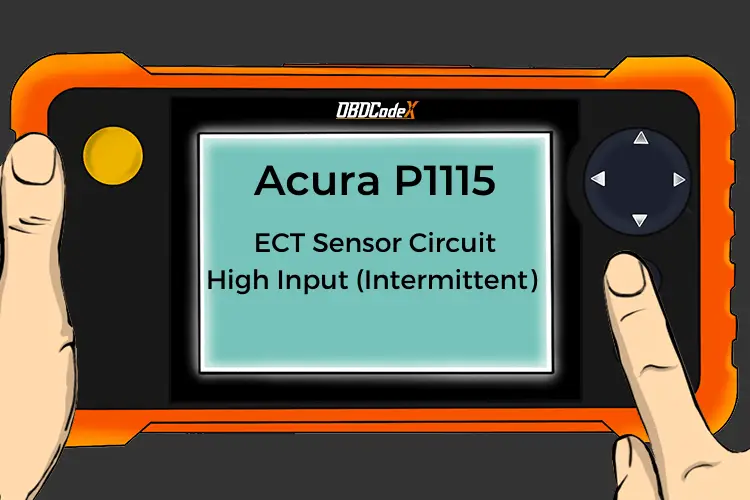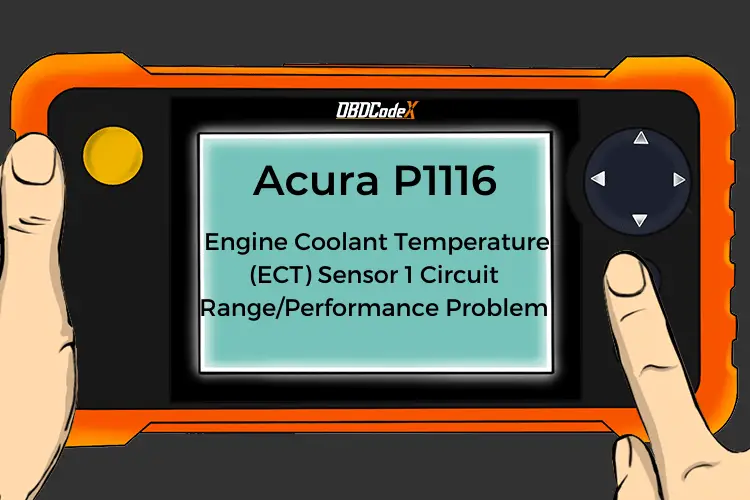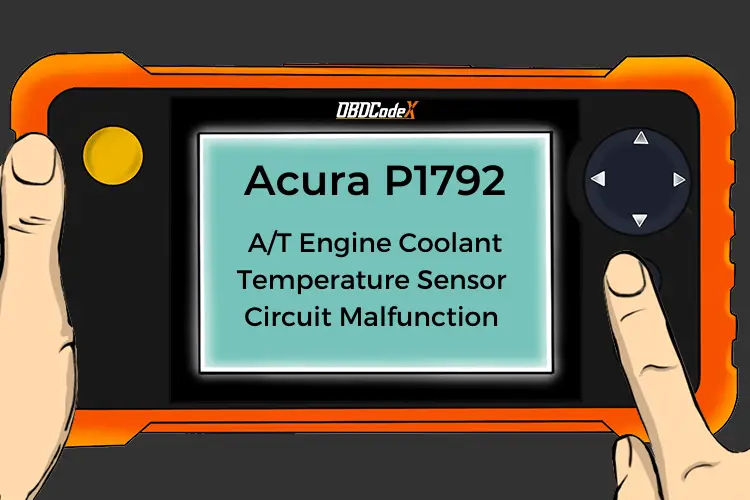P0115: Engine Coolant Temperature Sensor Circuit Malfunction
Is your scanner showing P0115?
No worries. We'll show you what it means and how to deal with it.
P0115: Engine Coolant Temperature Sensor Circuit Malfunction
OVERVIEWWhat Does The P0115 Code Mean?
The ECT (Engine coolant temperature) sensor is basically a thermistor that changes resistance with temperature. Usually a two wire sensor, a 5 Volt reference from PCM (Powertrain Control Module) and ground signal to PCM.
This is different from a temperature SENDER (which usually operates the dash temperature gauge and operates in a similar way as the SENSOR, only it’s a different circuit than what a P0115 is referring to).
As the temperature of the coolant changes, the resistance changes on the ground signal to the PCM. When the engine is cold, the resistance is high. When the engine is warm, the resistance is low.
If the PCM detects a voltage condition that seems abnormally low or high, P0115 will set.

P0115 wiring diagram
What Are The Symptoms Of The P0115 Code?
Symptoms of a P0115 DTC code may include:
- MIL (Malfunction Indicator Lamp) illumination will always occur
- Vehicle may be hard to start
- May blow a lot of black smoke and run extremely rich
- Engine may want to die or backfire in tailpipe
- Engine may run lean and increased Nox emissions may be apparent (Requires gas analyzer)
- Cooling fans may run all the time when they shouldn’t be, or not at all when they should be
What Are The Potential Causes Of The P0115 Code?
Usually the cause can be traced to a bad ECT sensor, however that doesn’t preclude the following:
- Wiring or connector damaged at sensor
- Open or short in reference or signal circuit
- Open or short in signal circuit
- Bad PCM
How Can You Fix The P0115 Code?
Step 1
Visually check the sensor for damage to wiring or connector and repair as necessary. Then, if you have access to a scanner, determine what the temperature of the engine is. (If you don’t have access to a scan tool, using the dash temperature gauge may not be an effective way to determine coolant temperature. This is because the P0115 code is referring to the ECT SENSOR, and the dash gauge is operated by, usually a one-wire SENDER. Basically a different sensor that the code doesn’t refer to.)
Step 2
If the engine temperature is abnormally high, around 280 deg. F, that’s abnormal. Unplug the sensor on the engine and see if the signal drops to, say, negative 50 deg. F. If it does, then it’s a good bet the sensor is bad, internally shorted, causing a low resistance signal to be sent to the PCM.
However if you want to be sure it’s the sensor and not the wiring, there’s a couple tests you can do. With the ECT sensor unplugged, check that you have 5 volts on the reference circuit with KOEO (Key on engine off). Also you can check the resistance of the sensor to ground using an Ohm meter.
The resistance of a normal sensor to ground will vary a little depending on the vehicle, but basically, if the temp of the engine is around 200 deg. F., the resistance will be about 200 Ohms.
If the temperature is about 0 def. F., the resistance will be over 10,000 Ohms. With this test you should be able to tell if the resistance of the sensor matches the temperature of the engine. If it’s not accurate according to your engine’s temperature, then you probably have a bad sensor.
Step 3
Now, if the temperature of the engine according to the scanner is around 280 deg. F. and unplugging the sensor doesn’t cause the reading to drop to negative 50 deg. F, but it stays at the same high temperature reading, then you’ll need to repair the short on the signal circuit(ground) to the PCM. It’s shorted directly to ground somewhere.
Step 4
If your temperature reading of the engine according to the scanner is showing negative 50 deg. F or so, (and you don’t live in the arctic!) unplug the sensor and check for a 5V reference present at the sensor.
Step 5
If there isn’t, then check at the PCM connector for proper 5V reference. If it’s present at the PCM connector, then repair the open or short on 5V reference from PCM. If there is no 5V reference present at the PCM connector, then you’re done with your diagnosis and you may have a PCM fault.
Step 6
If the 5V reference circuit is intact, then check the ground signal to the PCM using the previous ground resistance test. If the resistance isn’t normal for the temperature of the engine, then ohm the resistance of the ground signal to the PCM by removing the ground signal wire from the PCM connector. The wire should have no resistance, unplugged from the PCM to the sensor.
If it does, repair open in the signal to the PCM. If it doesn’t have any resistance on the ground signal wire and the resistance test of the sensor is normal, then suspect a faulty PCM.
Other coolant engine light codes: P0115, P0116, P0117, P0118, P0119, P0125, P0128
Recommended Parts
Below are some recommended auto parts to help you address the trouble code affecting your vehicle and get it running smoothly again:
>>> ECT Sensor
>>> Twippo 372Pcs Waterproof Wire Connectors Kit
>>> INNOVA 5210
Note: During the purchasing process, please check carefully whether the part you want to buy fits your car!




